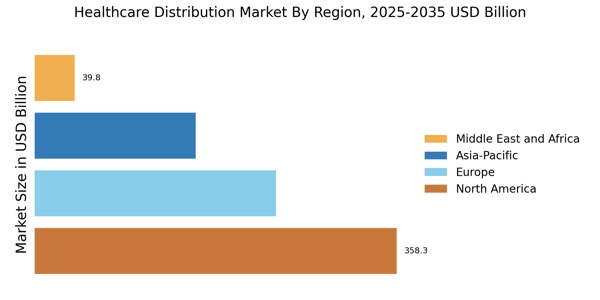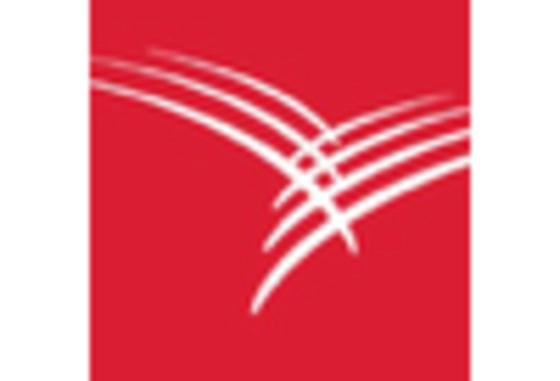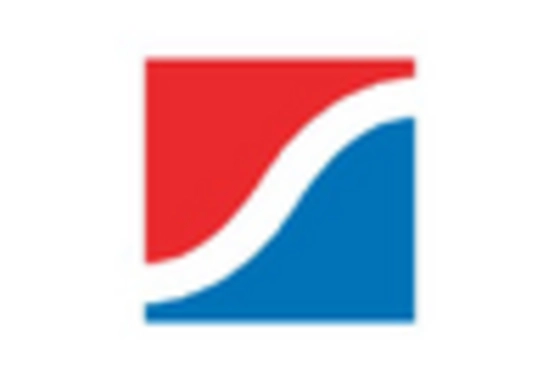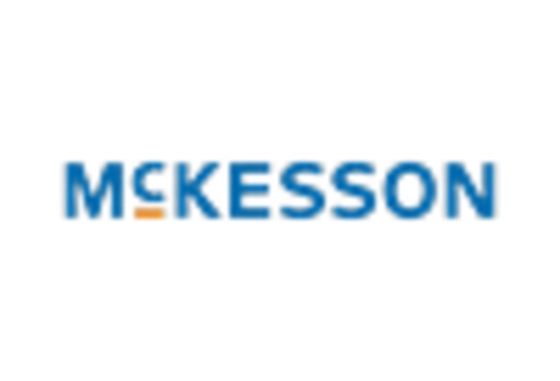The Healthcare Distribution Market is currently characterized by a dynamic competitive landscape, driven by factors such as technological advancements, regulatory changes, and evolving consumer demands. Major players like McKesson Corporation (US), AmerisourceBergen Corporation (US), and Cardinal Health, Inc. (US) are at the forefront, each adopting distinct strategies to enhance their market positioning. McKesson Corporation (US) focuses on digital transformation and supply chain optimization, aiming to streamline operations and improve service delivery. In contrast, AmerisourceBergen Corporation (US) emphasizes strategic partnerships and acquisitions to expand its portfolio and enhance its distribution capabilities. Cardinal Health, Inc. (US) is also pursuing innovation, particularly in the realm of healthcare technology, to improve efficiency and patient outcomes. Collectively, these strategies contribute to a competitive environment that is increasingly reliant on technological integration and operational efficiency.
The business tactics employed by these companies reflect a concerted effort to localize manufacturing and optimize supply chains, which are crucial in a market that is moderately fragmented. The competitive structure allows for a diverse range of players, yet the influence of key companies remains substantial. This fragmentation can lead to both opportunities and challenges, as smaller firms may struggle to compete against the scale and resources of larger entities. However, the presence of multiple players fosters innovation and responsiveness to market changes, which can benefit the overall healthcare distribution ecosystem.
In August 2025, McKesson Corporation (US) announced a strategic partnership with a leading telehealth provider to enhance its service offerings. This collaboration aims to integrate telehealth solutions into McKesson's distribution network, thereby improving access to healthcare services for patients. The strategic importance of this move lies in its potential to position McKesson as a leader in the evolving landscape of healthcare delivery, where telehealth is becoming increasingly vital.
In September 2025, AmerisourceBergen Corporation (US) completed the acquisition of a regional distributor specializing in specialty pharmaceuticals. This acquisition is significant as it allows AmerisourceBergen to expand its reach in the specialty drug market, which is experiencing rapid growth. By enhancing its capabilities in this area, AmerisourceBergen is likely to strengthen its competitive edge and better serve healthcare providers and patients alike.
In July 2025, Cardinal Health, Inc. (US) launched a new digital platform aimed at improving supply chain transparency and efficiency. This initiative is particularly relevant in the current market, where stakeholders demand greater visibility into the distribution process. By investing in technology that enhances supply chain management, Cardinal Health is positioning itself to meet the needs of a more informed and demanding customer base, thereby reinforcing its market position.
As of October 2025, the competitive trends in the Healthcare Distribution Market are increasingly defined by digitalization, sustainability, and the integration of artificial intelligence. Strategic alliances are becoming more prevalent, as companies recognize the need to collaborate in order to leverage technological advancements and enhance service delivery. Looking ahead, competitive differentiation is likely to evolve from traditional price-based competition to a focus on innovation, technology integration, and supply chain reliability. This shift underscores the importance of adaptability and forward-thinking strategies in navigating the complexities of the healthcare distribution landscape.


















Leave a Comment